East New York Rezoning Preserves Side Streets, Focuses on Subsidized Housing
The new housing generated by the de Blasio’s rezoning of East New York will be mostly subsidized, according to new details revealed by the administration Saturday. Other than that, the plan follows the same pattern carved out by Amanda Burden and the Bloomberg administration, as New York YIMBY pointed out: Upzone the avenues, downzone the…
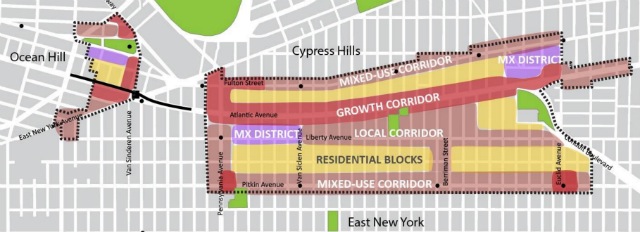

The new housing generated by the de Blasio’s rezoning of East New York will be mostly subsidized, according to new details revealed by the administration Saturday. Other than that, the plan follows the same pattern carved out by Amanda Burden and the Bloomberg administration, as New York YIMBY pointed out: Upzone the avenues, downzone the residential side streets.
That means an upzone for Atlantic Avenue from Sheffield Avenue to Euclid Avenue, with buildings as high as 12 stories. It looks less sweeping than we were expecting, a much smaller area. Surprisingly, a wedge of Ocean Hill is also included.
The area, nestled around Atlantic between Broadway, Eastern Parkway and New York Avenue, will be upzoned and downzoned on a block-by-block basis, with affordable housing up to 12 stories going in along Broadway but downzoning planned for several blocks of low-density, 19th century houses between Herkimer and Atlantic. Interestingly, no rezoning for the manufacturing areas is planned, according to YIMBY.
Click here to see the map in more detail.
We’re wondering which particular projects and developers will benefit from the plan, but so far it looks good to us. What do you think of it?
De Blasio Administration Unveils Details of East New York Plan [NYY]

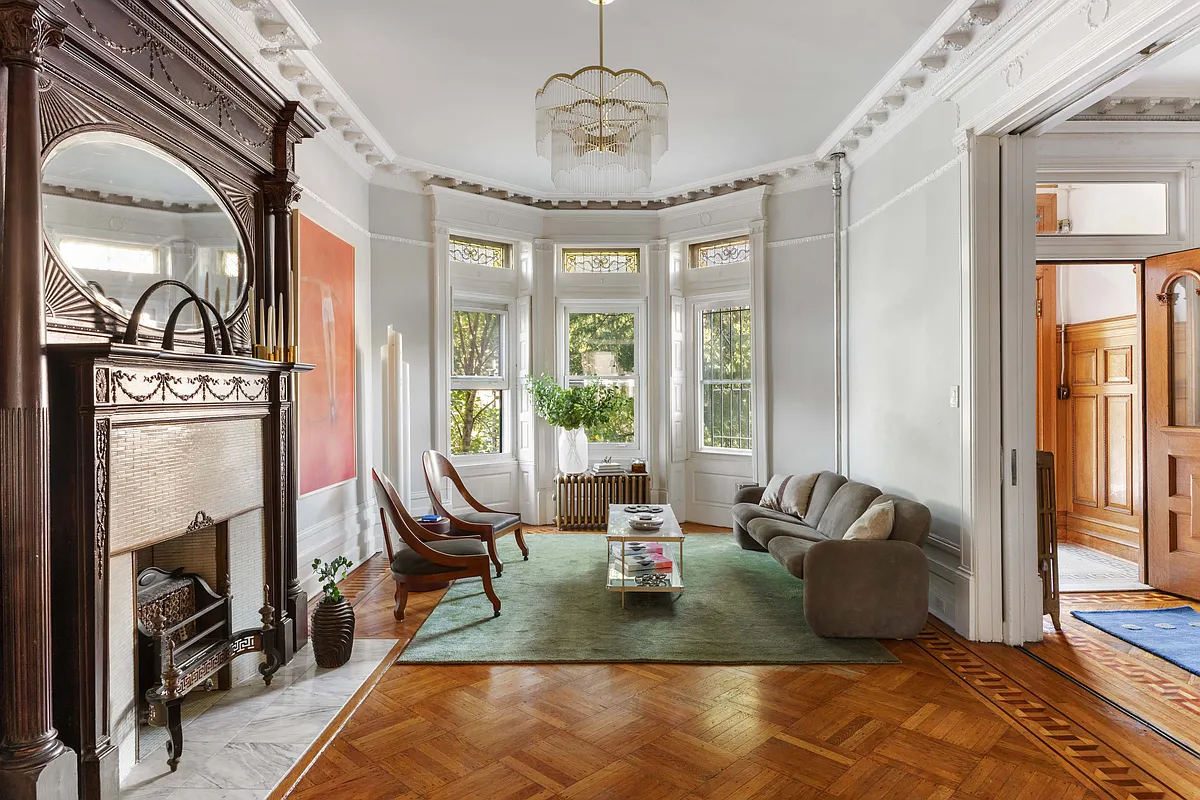
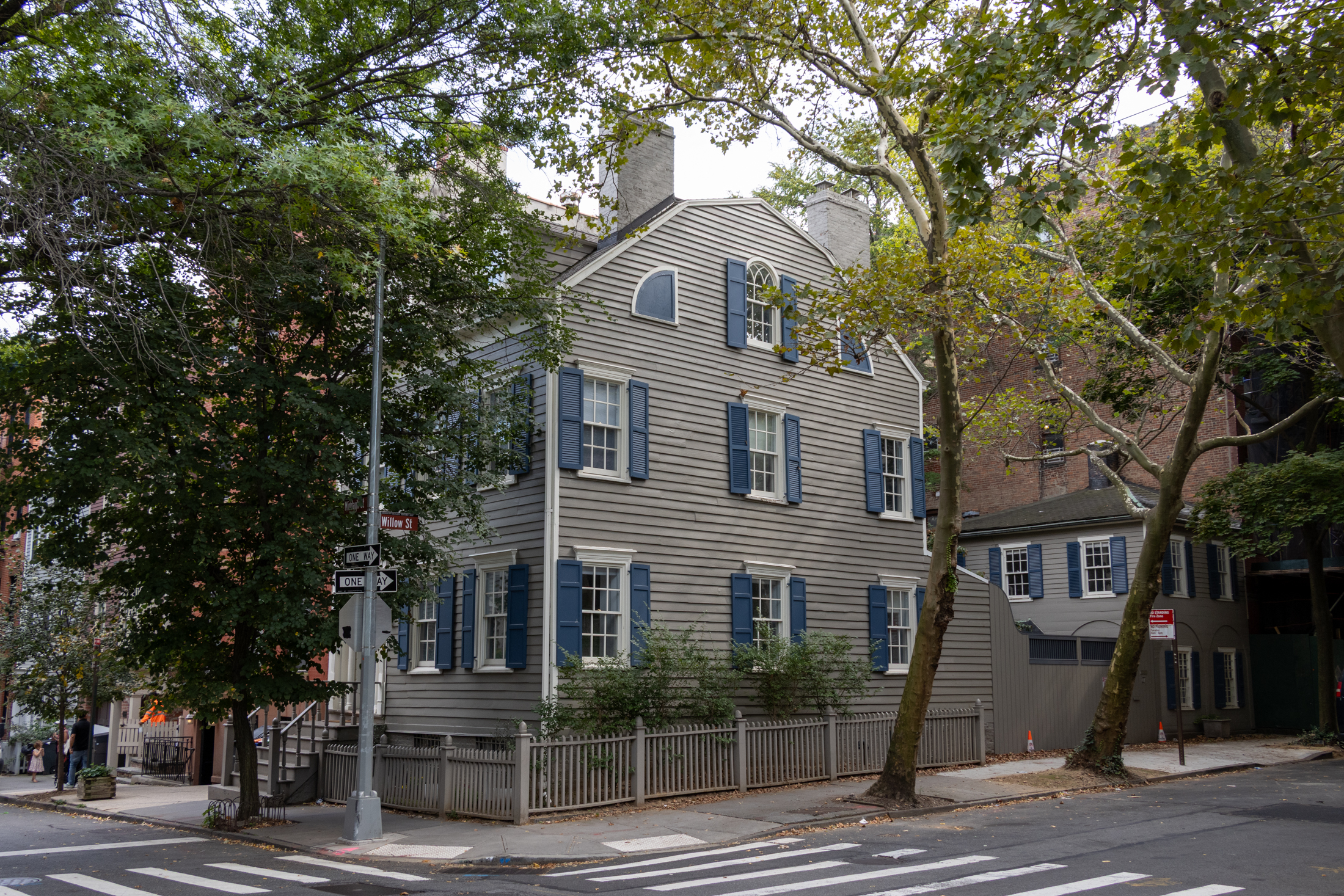
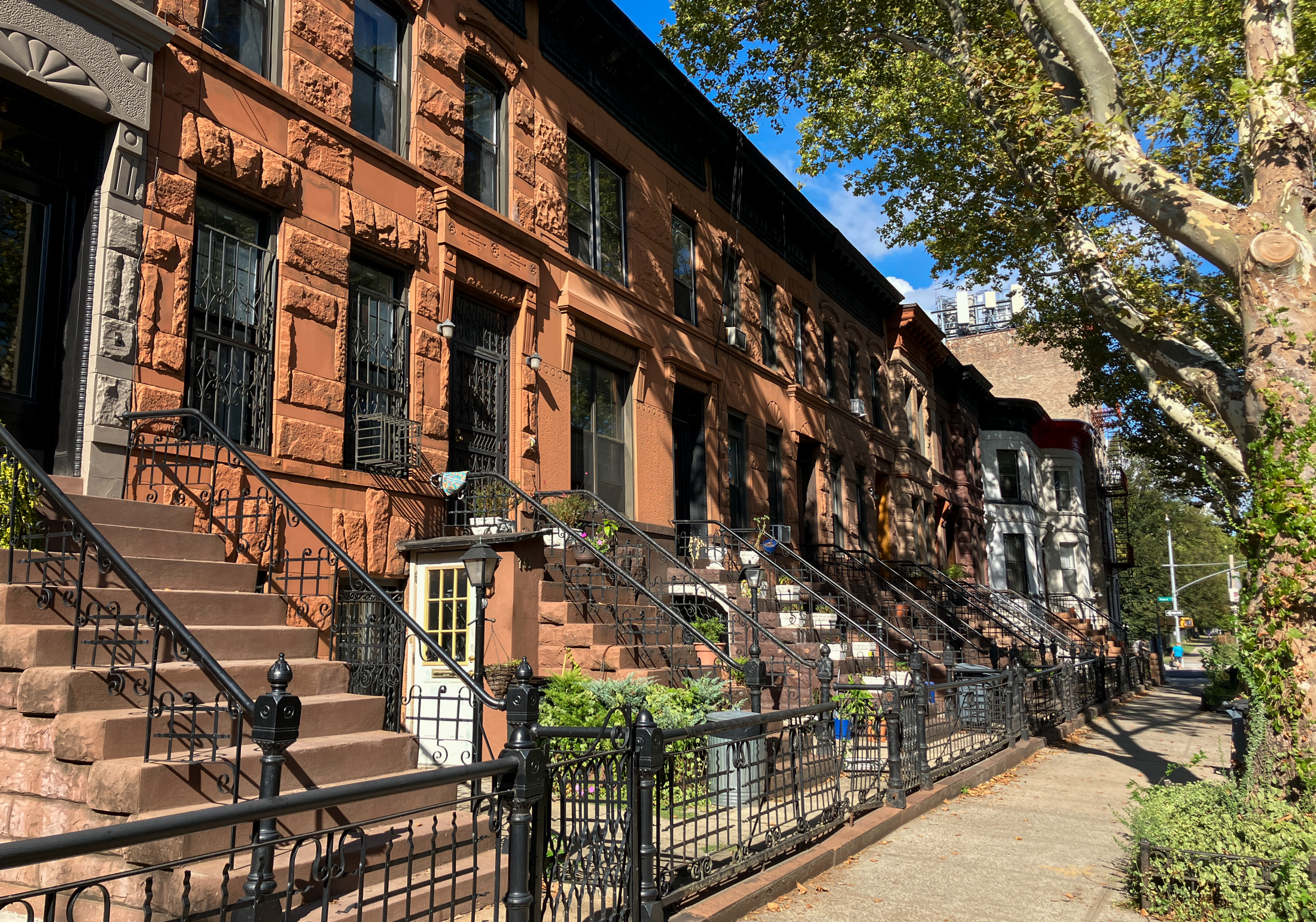
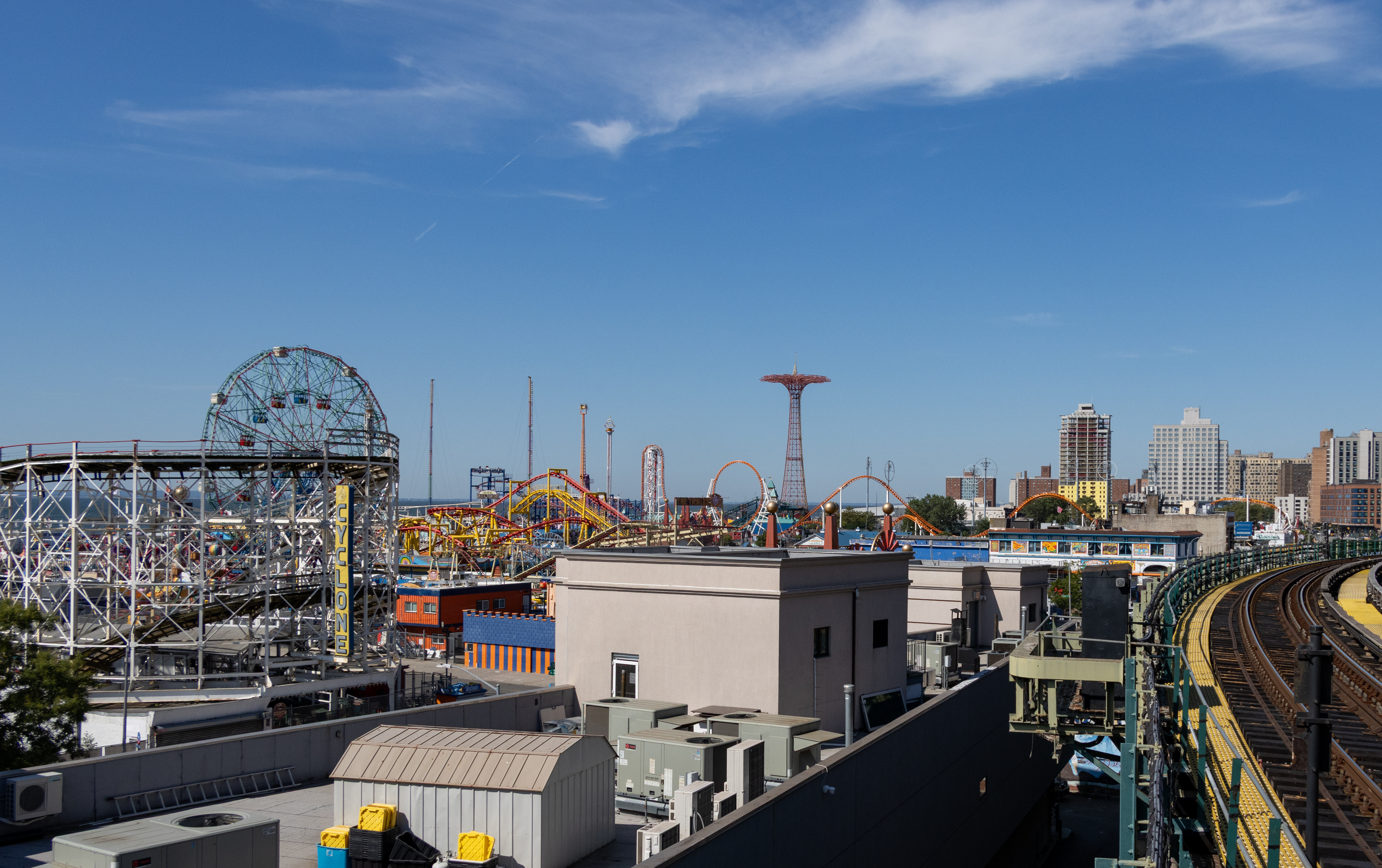
NY Mag just dropped this, good article even touching on the RE players already making moves in the area:
http://nymag.com/daily/intelligencer/2015/01/east-new-york-gentrification.html
Not sure why they mention Dixon as a developer since they invest in much higher-end housing stock than ENY can offer and probably won’t be the type of developer to hit ENY soon.
Overall it’s a good plan, my biggest concern is since these (and many more) all fall within these new zones does it mean their days are numbered?
http://bstoner.wpengine.com/blog/2014/10/building-of-the-day-2840-atlantic-avenue-2/
http://bstoner.wpengine.com/blog/2014/03/building-of-the-day-91-pennsylvania-avenue/
http://bstoner.wpengine.com/blog/2013/12/building-of-the-day-68-pennsylvania-avenue/
http://bstoner.wpengine.com/blog/2013/10/building-of-the-day-135-pennsylvania-avenue/
http://bstoner.wpengine.com/blog/2013/09/building-of-the-day-2883-atlantic-avenue/
http://bstoner.wpengine.com/blog/2012/07/building-of-the-day-2840-atlantic-avenue/
http://bstoner.wpengine.com/blog/2013/08/building-of-the-day-109-111-bradford-street/
http://www.propertyshark.com/mason/Property/209869/486-Liberty-Ave-Brooklyn-NY-11207/
If this goes well they should rezone or encourage more development in the section of Livonia ave. south to Linden Blvd. since it has the 3 and L train as transit options.
City Planning’s proposal for East New York is a massive up-zoning:
Atlantic Avenue’s C8-2 (FAR: 2.0)/M1-1 (FAR: 1.0) becomes R8A (12 story heights and FAR of 6.02 to 7.2)
Fulton Street’s R5 (4 stories, FAR: 1.25) becomes R6A (7 story heights and FAR of 3.0 to 3.6)
Pitkin Avenue’s R6 (FAR: 2.43)/R5 (4 stories, FAR: 1.25) becomes R7A (8 story heights and FAR of 4 to 4.6)
Liberty Avenue’s R5 (4 stories, FAR: 1.25)/M1-1 (FAR: 1.0) becomes R6A (7 story heights and FAR of 3.0 to 3.6)
The ‘Residential Core’, which is entirely sanwhiched between the avenues, was R5 (4 stories, FAR: 1.25) and becomes R5B (3.3 story heights and FAR of 1.35)
FAR is the amount of build-able sq. feet allowed by the zoning designation. This is ultimately what developers care about because square feet is what they are able market.
‘Down-zoning’ is a misnomer in this case. The small proportion of East New York that is keeping its R5 status is getting an increase in build-able sq. feet. 2,500 sq. ft. can built on standard 20×100′ lot under R5. 2,700 sq. ft. can be built on a 20×100′ lot re-zoned to R5B.
The residential blocks between Liberty and Pitkin are like 30-40% vacant lots anyway.
I guess I’m unclear on the decision to upzone a corridor without transit (Atlantic) rather than one with transit with plenty of capacity (Pitkin). Is it a realization that the CBs will look the other way for highrise development on Atlantic, but wouldn’t allow it on Pitkin?
Living on 4th Avenue wouldn’t be my cup of tea, but I don’t know why ANYONE would live there if there wasn’t the subway underneath.
In it’s current condition this specific area is full of parking lots for cars/school buses with many one story manufacturing structures. Has there been any mention of a plan to encourage construction of more manufacturing or commercial space like in the MX Districts? Currently it’s underutilized land adjacent to tons of transit (Broadway Junction: A/C/J/Z/ LIRR/ L/3 South on Livonia ave.). The section between Atlantic and Liberty ave. should have been rezoned for high rise housing since it’s closet to the transit hub and the remaining blocks south of it need more useable manufacturing/Commercial space. Take a look at Google Earth to see what i’m talking about.
There’s also a stop at Van Siclen, Shepherd ave. and express A at Euclid ave. Either you walk one block north from Atlantic for the J/Z or 3 blocks south for the A/C, not bad a walk either way.
bens, The community buy-in of the East New York re-zoning was based on the creation of jobs, not affordable housing. The unemployment rate in East New York is above 10%. The average median income hovers around $25,000. City Planning is re-zoning many of the commercial and manufacturing areas in East New York. To remove them all would risks massive displacement of businesses and job losses.
Changing all of New York’s commercial and manufacturing zoning to residential is extremely short-sighted. How is the city to attract business or keep growing businesses that started in New York if there is no place for them to lease or operate? Where will all of the housed residents work?